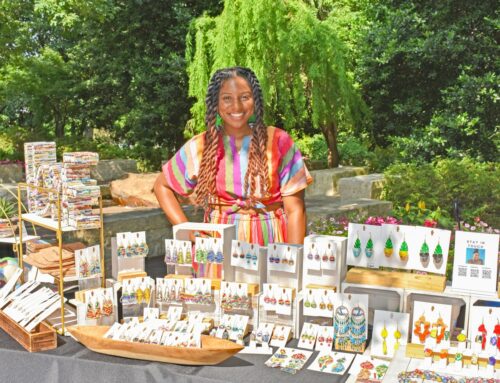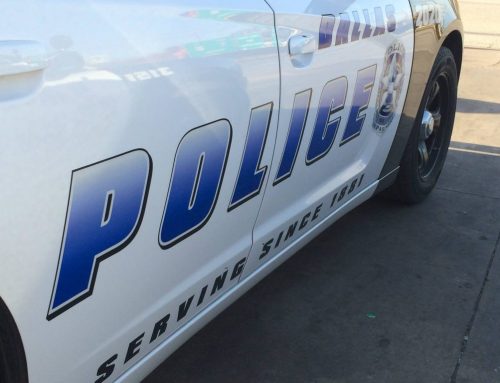How one couple’s dream home site evolved into an audubon Dallas sanctuary.
At the entrance of the trail that leads in the Cedar Mountain Preserve, this sign greets visitors: “Welcome- you are starting to hike into one of the very few natural wildernesses left in the country.”
Perhaps no one is more aware of this truth than Lakewood residents David and Kim Hurt, who regularly make the roughly 27-mile trek from their home to this vast stretch of undisturbed nature. On this particular day, David is acting as tour guide in his oft-repeated role of showing newcomers around the land to the west of the preserve known as Dogwood Canyon. It’s clear that he’s passionate about the place, sounding much like an excited schoolboy as he gesture to his surroundings, but he stops mid-sentence when he hears a familiar song.
“There’s a blue-gray gnatcatcher right up at the top of that tree,” David says, immediately pulling his binoculars to his eyes.
A few steps later, another songs floats in the air, the difference is distinguishable only to those who know their bird warbles.
“There’s a painted bunting in that tree,” he says, his binoculars up again. “See it? It’s the most colorful bird in America.”
The tour continues like this, with David stopping along the way to point out flora or fauna unique to the canyon, such as white trout lilies that blanket the slopes each February. He and his wife are nature enthusiasts, no doubt, but the Hurts’ ties to the land extend much further than that-it was supposed to be their dream home.
Twelve years ago, the Hurts scoped out this piece of property along FM 1382, roughly 16 miles from downtown Dallas. Owning a Wild Birds Unlimited store was keeping them tied to the city, but both of them had grown up in central Texas between Waco and Austin, and longed to settle down somewhere less urban and more like their childhood stomping grounds. When they discovered Dogwood Canyon, they thought they had found the perfect spot.
“But as we began to explore it more, we realized how special it really was,” explains Kim. “We decided we didn’t want to buy it to build on-we wanted to buy it to conserve.”
Little by little they bought up 40 acres, the last portion purchased right around the time that Audubon Dallas was looking to preserve some green space for a bird sanctuary.
“It was a leap of faith,” Kim says. “We didn’t know who would want it, but the Audubon jumped on it.”
The Hurts made an agreement with Audubon: For every acre of Dogwood Canyon it purchased, the Hurts would donate one of their acres to the organization. About eight years ago, Audubon agreed to this deal and eventually matched the Hurts’ acreage.
But the project didn’t stop there, A year into the local chapter’s engagement, the National Audubon Society embarked on its 2020 Vision, a goal to have 1,000 Audubon education centers in the U.S. urban areas by the year 2020. As a result, the Hurts original 40 acres expanded into 272-acre, $7.5 million Dogwood Canyon Center, the first custom-designed center in the state. And the thing that makes David and Kim Hurt most excited is that it will be used to connect urban schoolchildren with the nature they rarely encounter.
“Nowadays they just spend their time inside playing video games and such,” David says. “That mission of getting kids outside really spoke to Kim and me.”
Once the center opens in fall 2008, a gathering building will be constructed at the mouth of the canyon, where a giant and dormant satellite dish now sits. DFW International Airport once used it to help direct planes, and it’s the only portion of the canyon damaged by a bulldozer, David says, so Audubon plans to reuse that space for its few offices and educational spaces. the rest, however, will remain undisturbed.
“It’s really very precious land. This is probably the most natural place you can find in Dallas County, the least imposed upon by humans. There’s no litter, no non-native invasion of plants,” David says. “If you took one acre of this land, you would find every tree species known to North Texas in just that one acre-and we have 300 acres.”
The variety of plants and trees as well as the birds that nest in them are what make the canyon so prized in the Audubon’s view, and the rare finds are what led the Hurts to donate the land in the first place. For example, it has North America’s only known population of flowering dogwoods, the canyon’s namesake, that grow out of limestone white rock soil. And it’s the only place that the black-chinned hummingbird of West Texas can be found nesting in these typically East Texas trees.
The Hurt family often discovers new species during their trips to the canyon. At one point they found the rare Hexalectris orchid.
“If you look at a plant book, there are four dots where they’re found in the state of Texas,” Kim says, “and they’re here.”
Kim says the family makes the rek at least once a month, depending on the weather, to let 8-year-old Ben and 1-year-old Brynne soak up the surroundings. Kim jokes that Brynne will say “Dogwood Canyon” before she says “mama,” and David says that for Ben, “it’s just like his big back yard.”
“He’s a city kid, but when you take him to Dogwood Canyon, he converts into nature boy. We’ve been taking him there since he was a baby, and we’ve seen the transformation,” David says. “Ben says his goal in life is to be a wildlife warrior like Steve Irwin, and we know the reason. It’s not that Ben has any special genetics to like nature; it’s just exposure to nature at a young age that changes children’s lives.”
Soon enough, schoolchildren will descend upon the canyon to learn about different ecological regions and identify the sights and sounds of nature.
“The idea is to get kids off the bus, slow them down, and get them on the trails,” David says.
The demand is obviously huge, he continues, because 5,000 fourth-graders from adjacent school districts have already signed up, and the center isn’t even established yet. The center’s programs will initially target fourth-through seventh-graders because the state requires fifth-and eighth-graders to take a Texas Assessment of Knowledge and Skills science exam, explains Anne Brown, Audubon Texas executive director.
“Science skills are very hard for kids to understand unless they experience them, so that’s why having a field-based experience makes such a big difference,” Brown says.
Once out of the Hurts’ earshot, she’s also quick to heap praise upon them for their large part in not only seeing this project through, but also getting it off the ground in the first place.
“David and Kim’s gift was $750,000, and that’s when they were younger and starting off,” Brown says. “To give that much…”
It’s not a figure that the Hurts talk much about. When they do talk about it, both of them are quick to steer the conversation toward the Audubon’s plans and goals for the site.
What’s most amazing is that now, when David glances up at the canyon’s steep slopes, he doesn’t see it as what could have been done with his family’s dream home.
“We had an opportunity to buy a house on a creek in Lakewood,” he rationalizes. “We know this is a much greater place, and it could be used by some many more people than just our family. Many other children and families will get to use it and it will hopefully transform people in our community.
“That’s our greatest dream. Kim and I would never have done this if we didn’t think it could transform other people’s lives like it has our own child.”





